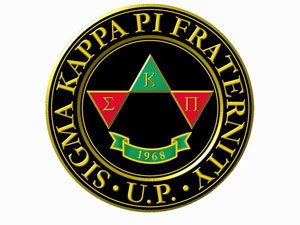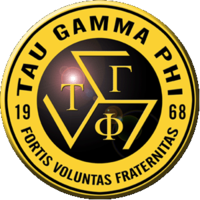When Marcos declared martial law in September 1972, I was a student in UP Diliman taking up B.S. Chemical Engineering. When UP classes reopened around October or November (after a few weeks’ suspension due to the initial uncertainties of martial law), I decided to also go back to my studies while at the same time doing clandestine work with other comrades inside the university as underground ND activists. All my subjects as a freshman were still limited to the general arts and sciences at the Palma Hall (the famous “AS”). And that’s where this story about my short dalliance with frats is supposed to begin.
Now the thing is, I need to flash back a bit. Since I entered the university some months before before martial law, I’ve never quite melded into any of its sub-communities and sub-cultures, keeping only very few friends from my high-school days and spending most of my free time reading, taking notes, and doing doodles at the Main Library.
In fact, before martial law, I didn’t even mix a lot with UP campus activists. The reason was that my political work with Kabataang Makabayan (KM) back then was outside the campus. It was low-profile work that entailed linking with KM community chapters and activists of northern Quezon City area, i.e., in and around the Project 6, 7, 8, Philam, Pag-asa, Bago-Bantay and SFDM areas.
So when the regional leadership of KM—which had shifted to underground mode upon ML declaration—reassigned me to clandestine work inside UP Diliman around November 1972, I quietly reestablished my natural as well as political ties with other campus activists who had begun to regroup and fight back against the fascist dictatorship.
That’s how I got introduced to campus fraternities. The only student organizations that remained above-ground and operating quite normally were the fraternities, sororities, academic clubs, and traditional varsitarian associations. The campus ND underground, implementing Mao’s principle of the mass line and the related dictum about “fish swimming in vast waters”, made sure that all activists resumed “swimming” in all kinds of waters—big and small, deep and shallow.
Taking cue from the political calls, I became particularly close to fratmen with their tambayans (regular hangout spots) around the AS second-floor lobby. My favorites were the two frats right on the opposite sides of the lobby, namely Tau Gamma Phi and Sigma Kappa Pi. With Tau Gamma were the Nolasco brothers, Joey and Ricky. With EKIT (which was how everyone called Sigma Kappa Pi) were the Villarta brothers and Jarius Bondoc, my best “frienemy” back then. I would hang around with them, learn a few of their frat secrets, and they would convince me to join. I nearly did, too.
What prevented me from joining was a simple fact: When you joined a frat, the unavoidable effect was that you would no longer be as close to the other frats as before. And for me, performing my underground KM tasks required that I could still freely “swim around” among other organizations. I was still mulling my options when I was arrested in one of those “silent protest actions” at Vinzons Hall on January 30, 1973, and had to spend many long months in military prisons.
When I was released from detention and underwent debriefing by my captor Maj. Esguerra of ISAFP 5th MIG, he told me this as he signed my papers on his desk: “We are releasing you for now. But don’t let me hear that you will again take up your position as secretary of the CPP branch in UP.” He said these words with dramatic flair, as if to reveal that they knew everything about me. I nodded, and answered him in the most forthright manner, “I won’t.” And I didn’t. After all, having seriously embarked meanwhile on an ideological self-education program, I hadn’t finished reading Das Kapital yet.
Nevertheless, I successfully applied for readmission at UP Diliman in 1974, went through the motion of resuming my studies, again spent most of my campus time in the reading rooms of the Main Library, and still didn’t join any frat. By then my sense of genuine class fraternity had grown way beyond the confines of campus frats and youth organizations. I was just biding my time to drop out and work full-time for the anti-fascist underground.
Now, decades later, my sense of organizational affiliation has mellowed somewhat. At times I wonder if things might have fared better or worse (for me) had I joined the Sigma Kappa Pi or the Tau Gamma Phi—both of which are celebrating their 50th founding anniversaries this year. I haven’t personally kept in touch with any of the Villarta or Nolasco brothers, although I occasionally read top-gun journalist Jarius Bondoc’s columns and exposés.
As for that more comprehensive and enormous “fraternity” which the ISAFP accused me of joining as a youth activist, it also celebrates its 50th anniversary this year.
I’m sure that the common foundation year of all three organizations in 1968 is just coincidental, and any imagined secret connections to each other merely peripheral. Let historical research be the judge of that. #



